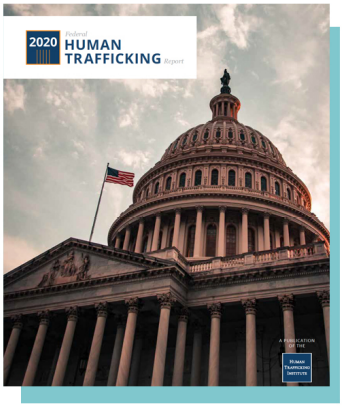State Reports

Human trafficking is illegal all across the United States, but how do we know if the federal laws are being enforced? Our State Reports provide state-specific data on convictions, types of trafficking prosecuted, and trends over time so justice sector professionals, government agencies, and everyday advocates can analyze and improve the United States’ enforcement of trafficking laws. We created a report for all 50 states, the District of Columbia, and 4 U.S. territories from the data in the Federal Human Trafficking Report.
The 2021 State Reports will be available in the coming months. Until then, check out the 2020 State Reports below.

Click below to view your state’s track record
on federal human trafficking prosecutions
Why this data?
There are an estimated 24.9 million victims of human trafficking globally. Compelled to work or to engage in commercial sex acts, they live in exploitation. But the problem is not only a global one. It’s domestic too.
What did we find?
In 2020, federal courts in all 50 states, the District of Columbia, and 4 U.S. territories handled 579 active human trafficking prosecutions, 94% of which were sex trafficking cases and 6% of which were forced labor cases. A closer look showed the federal response varied wildly from state to state. Use the map above to find out how your state held traffickers accountable in 2020.
How do we know?
It is difficult to measure how prevalent human trafficking is in the United States, but there are ways to track the federal response to this often-hidden crime. In an effort to better understand how federal courts hold traffickers accountable, each year, we compile comprehensive data from every federal criminal human trafficking prosecution that United States courts handle each year as well as trends across civil cases.
For the first time, the 2020 Federal Human Trafficking Report contains data from 2020 federal human trafficking cases as well as from every federal criminal human trafficking prosecution since 2000, the year the Trafficking Victim’s Protection Act was passed into law.
prevalence estimate of trafficking in the state but instead serve as an objective summary of federal efforts to address human trafficking in that state. The Report does not
capture data from state prosecutions, state civil suits, or unreported human trafficking cases.
Year-over-year trends in the 2019 & 2020 State Reports represent data only from human trafficking cases charged under the Trafficking Victims Protection Act (TVPA). The
2019 State Reports provide a separate graphic that illustrates human trafficking cases charged outside of the TVPA to provide a more nuanced look at how the federal
government prosecutes human trafficking crimes. The 2020 Report notes how many trafficking cases were charged outside of the TVPA. In contrast, data in the 2018 State Reports represent all federal human trafficking cases, including those charged under the TVPA and outside of the TVPA. For this reason, data in the 2019 and 2020 State
Reports may differ from data in the 2018 State Reports.
